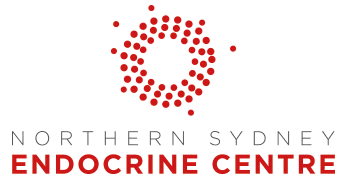What is reproductive endocrinology/infertility?
Reproductive endocrinology describes the hormones and control mechanisms that regulate sexual development, sexual function, and reproduction. There is a complex interplay between two key endocrine organs, the pituitary gland and ovary/testis (gonads). Important hormones produced from these organs include FSH, LH, Oestrogen and Testosterone. Disorders of reproductive endocrinology result from abnormal changes pituitary–gonadal axis and can include a wide range of symptoms including hirsutism/acne, oligomenorrhoea/amenorrhoea (irregular menstrual cycles) and infertility in women, and infertility (poor sperm production) and altered sexual function in men.
Infertility is defined as the inability to conceive a pregnancy after 12 months of unprotected sexual intercourse. It affects about 1 in 6 Australian couples of reproductive age.
Disorders of reproductive endocrinology
Menstrual irregularity
The ‘normal’ menstrual cycle often differs between women and can range between 21-35 days. Oligomenorrhoea is a term given to those cycles which fall outside this range and amenorrhoea is when cycles stops altogether. It is important to find the cause for the menstrual irregularity as treatment options will differ. Some of the more common causes are:
PCOS
Contraceptive/Hormonal treatments
Perimenopause
Hyperprolactinoma
Thyroid disease/Diabetes
Eating disorders/excessive exercise
Genetic cause
Medications e.g. anti-psychotics, anti-epileptics
Uterine fibroids/Polyps
How is menstrual irregularity treated?
Treatment depends on the cause for the irregularity. For example, treating an underlying thyroid condition or improving diabetes control can improve cycle length. Polycystic ovary syndrome often responds to weight loss whereas weight gain or less exercise can help other women to regain a predictable cycle. It is important that investigations are done to find the cause as uterine and bone health can be affected longer term.
Oligospermia (low sperm count)/azoospermia (nil sperm)
The causes for low sperm count are often sub-divided into “obstructive” and “non-obstructive” causes. Obstructive causes are usually due to a blockage of sperm flow such as a previous vasectomy or surgical procedure or possibly due to a rare condition called cystic fibrosis. Non-obstructive causes include pituitary issues such as high prolactin levels or secondary causes such as poorly controlled diabetes, over or under-active thyroid or medications (including anabolic steroids). There are rarer causes for low sperm count including sertoli-cell only syndrome of the testis, testicular cancer and both genetic and immunological conditions.
How is oligospermia/azoospermia treated?
The treatment will depend on the cause for the low sperm count. However, it is not always possible to improve sperm numbers and if a pregnancy is desired, fertility treatments such as intra-cytoplasmic sperm injection (ICSI) or micro-dissection/TESE, may need to be considered. Treating any secondary causes, such as obesity, thyroid disorders or poorly controlled diabetes can improve sperm counts and there are instances whereby LH and or FSH injections can replace endogenous production from the pituitary if lacking.

